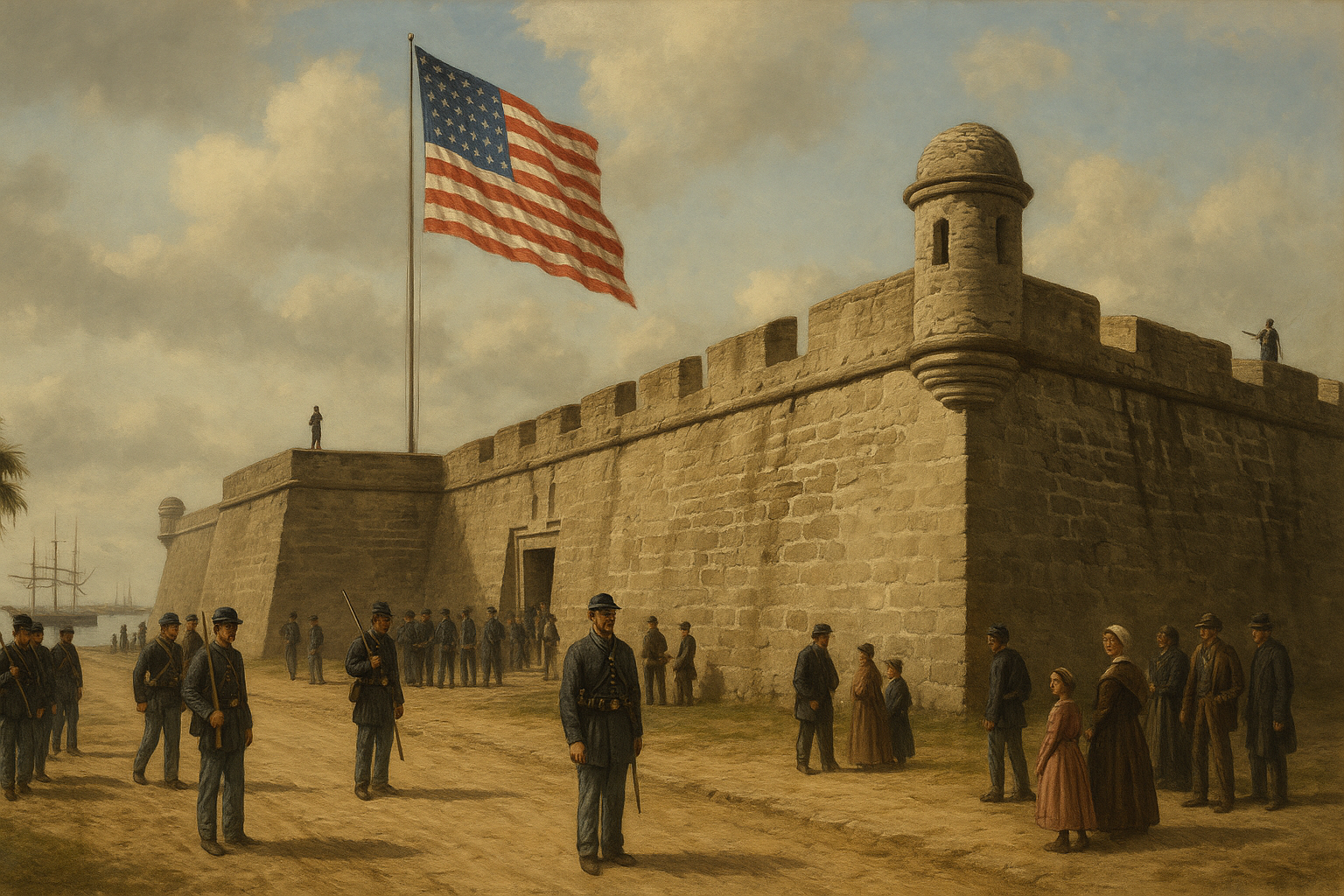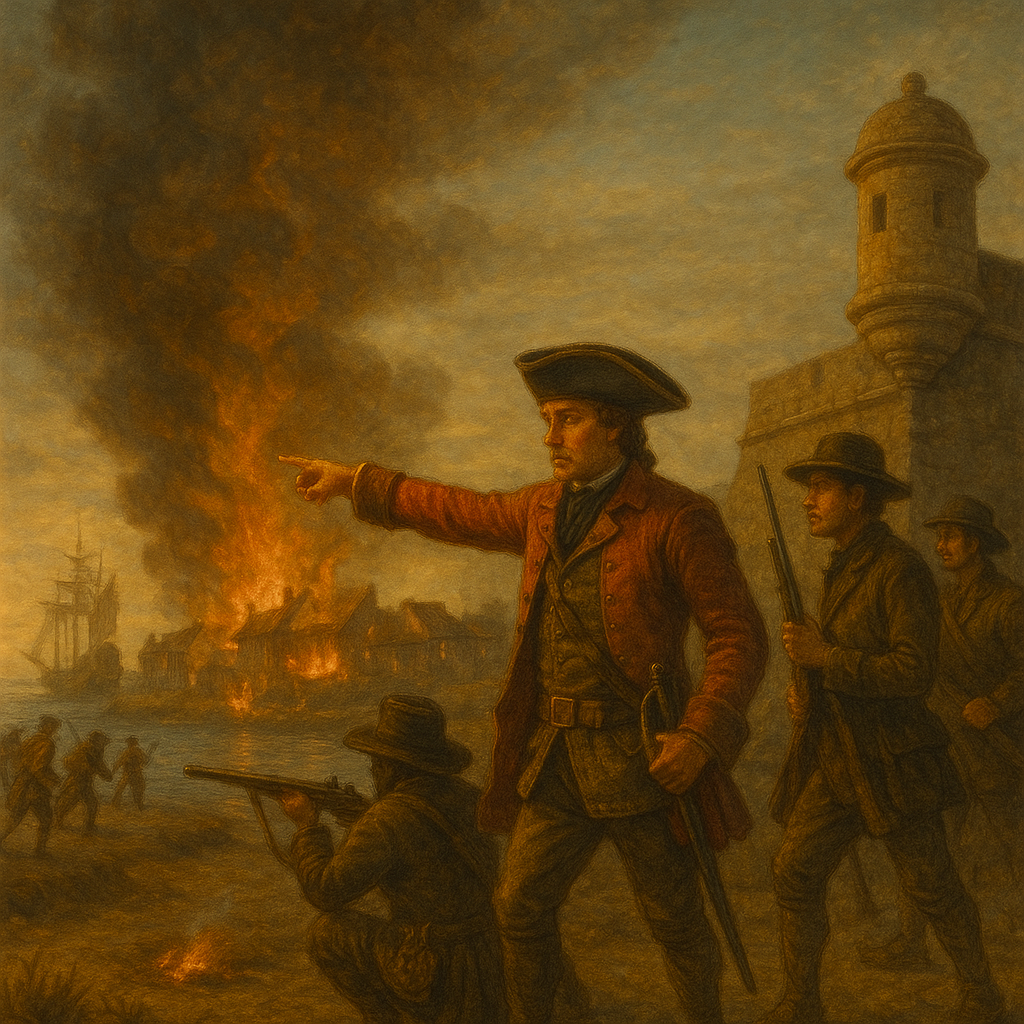St. Augustine and the Civil War: A Divided Florida Town
When the Civil War broke out in 1861, Florida was among the first states to secede from the Union — but not every part of the state was eager to fight for the Confederacy. St. Augustine, with its deep colonial roots and mixed population, found itself pulled in multiple directions. Though far from major battlefields, the city still felt the war’s tension, occupation, and consequences in ways that shaped its future.
Secession Comes to Florida
Florida seceded from the Union on January 10, 1861, becoming the third state to join the Confederacy. The state had fewer people and resources than its Deep South neighbors, but its long coastline and ports made it strategically valuable.
St. Augustine, a quiet coastal town with aging Spanish-style architecture and a modest population, was not an obvious hotspot. But it held a crucial harbor and symbolic importance as one of the oldest cities in America. Confederate troops quickly moved to take control of the Castillo de San Marcos — then called Fort Marion — raising the Confederate flag above its centuries-old walls.
A Town of Divided Loyalties
Not everyone in St. Augustine supported the Confederacy. The city had a number of Unionist sympathizers, including many Minorcans, a large population of free Blacks, and some wealthy families with Northern ties. While vocal resistance was rare, resentment simmered.
The city’s residents were cautious. Confederate troops never stayed long; they left to reinforce positions elsewhere in the state. That left St. Augustine exposed.
Union Occupation in 1862
In March 1862, Union Navy ships arrived in the harbor. With no real Confederate force to defend it, St. Augustine surrendered without a fight. Federal troops landed and occupied the town — and they would stay there for the rest of the war.
Union forces took over Fort Marion and turned it into a prison and military outpost. They raised the Stars and Stripes over the old Spanish walls, and a tense calm settled over the city.
The Union occupation brought both relief and hardship. For some residents, it meant safety from Confederate conscription and raids. For others, it felt like an invasion. The military presence disrupted daily life, and trade was limited. The local economy, already fragile, suffered under blockades and wartime restrictions.
African Americans and the War
One of the most important shifts during the war was the changing role of African Americans in St. Augustine. Many enslaved people in Florida fled to Union-controlled areas, including St. Augustine, seeking freedom and protection.
Some enlisted in the United States Colored Troops (USCT), fighting for the Union cause. Others found work in the city as laborers, guides, or aides for the Union army. Their presence — and the new freedoms they claimed — added to the town’s shifting identity during the war.
War’s End and Lasting Impact
When the Civil War ended in 1865, St. Augustine was still under Union control. It had been spared the destruction faced by cities like Atlanta or Richmond, but the scars were still visible.
The war’s end brought the formal abolition of slavery and a wave of social and economic uncertainty. Reconstruction policies would come to Florida slowly, and St. Augustine’s unique demographic mix — old Spanish families, Minorcans, freedmen, and Northern newcomers — created a complex postwar landscape.
Though small in scale, the Civil War era left a lasting imprint on the city. It marked the first time since its founding that foreign troops (in this case, from the Union) had occupied St. Augustine without resistance — a quiet but powerful turning point in its long history of conflict.
St. Augustine didn’t burn or fall in battle, but it was changed. Its experience during the Civil War was shaped not by bloodshed, but by its people’s quiet resistance, forced adjustments, and the slow realization that a new chapter in American life had begun — one they would now be part of, whether they were ready or not.






